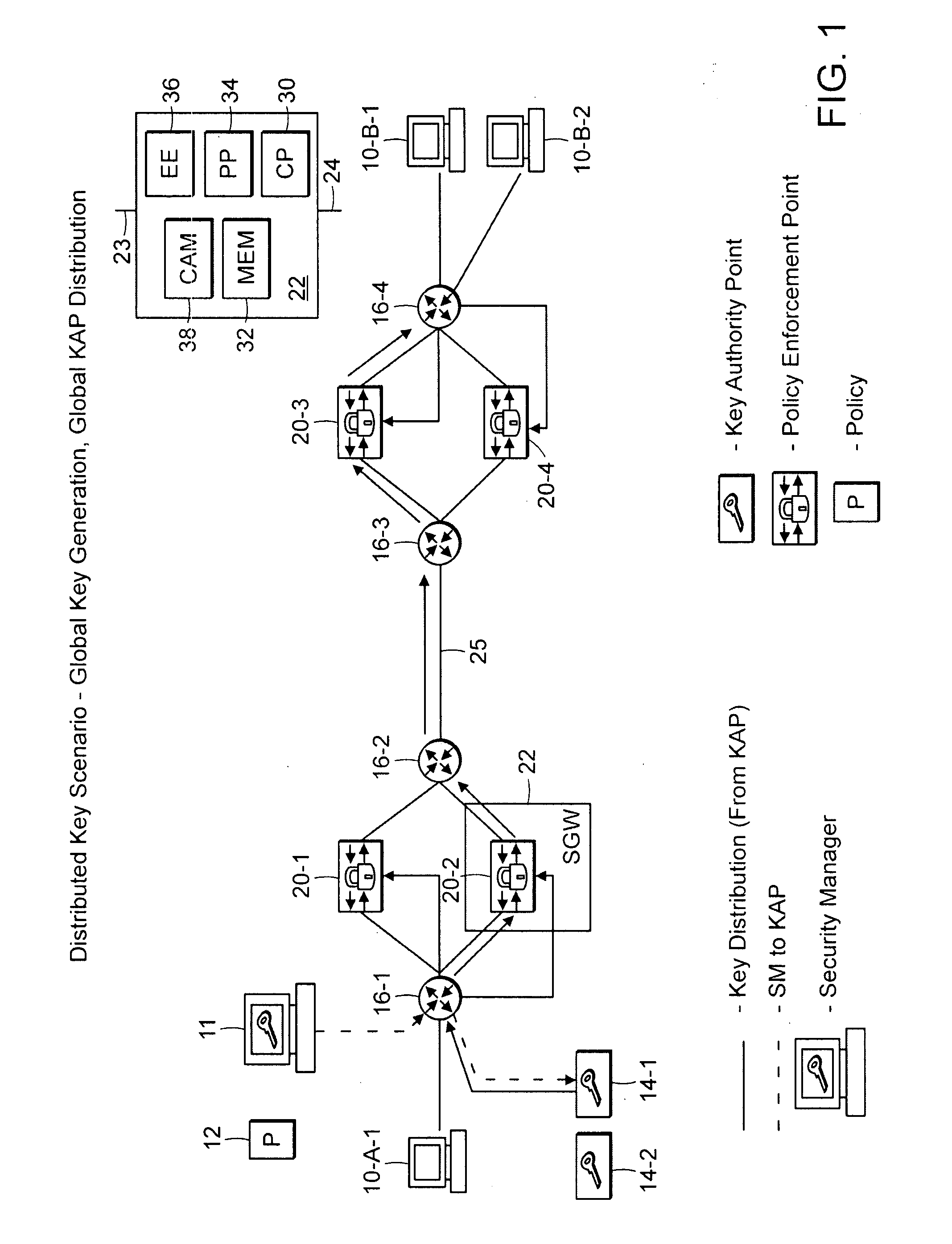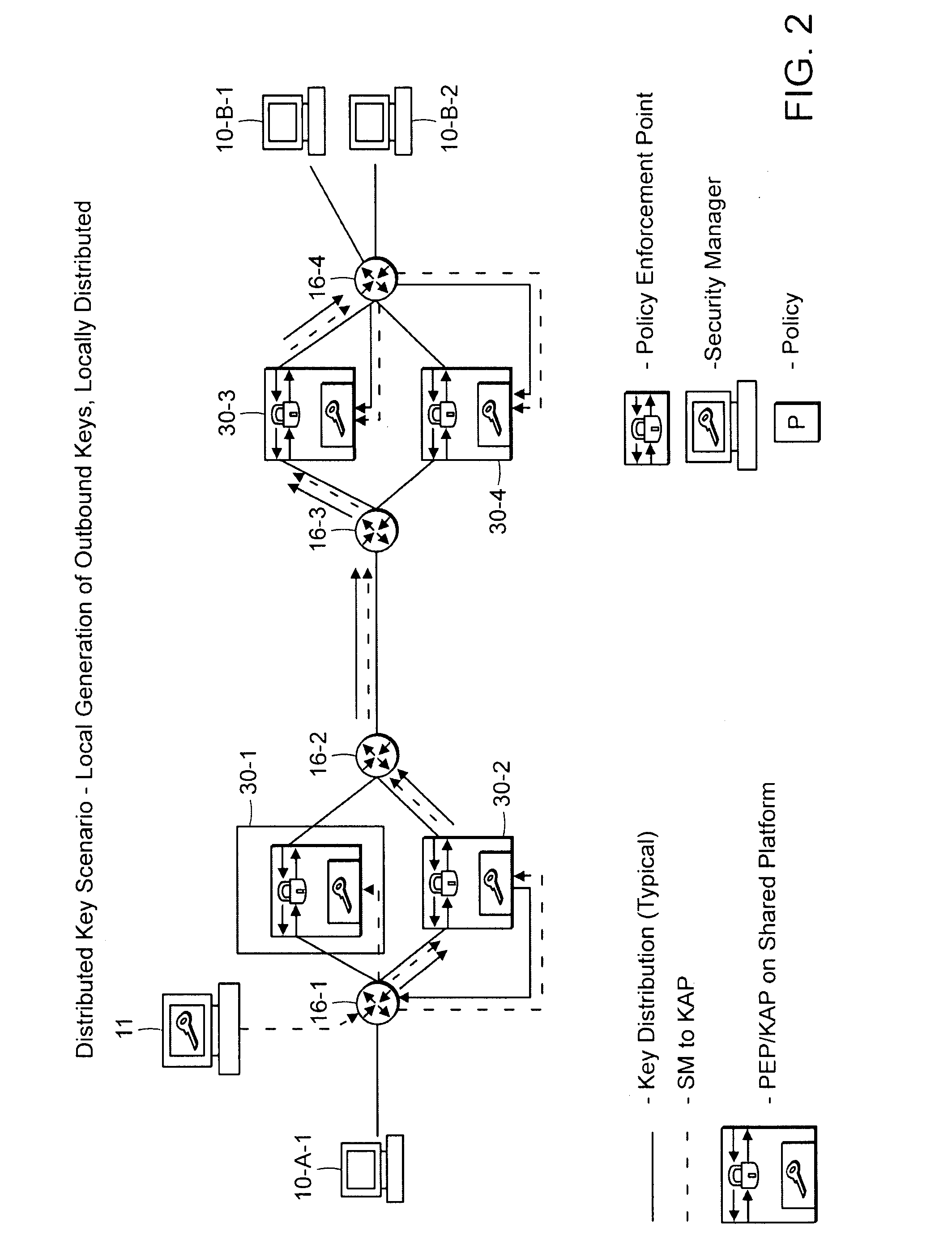Securing network traffic using distributed key generation and dissemination over secure tunnels
- Summary
- Abstract
- Description
- Claims
- Application Information
AI Technical Summary
Benefits of technology
Problems solved by technology
Method used
Image
Examples
Embodiment Construction
[0089] A description of preferred embodiments of the invention follows.
[0090]FIG. 1 is a system level diagram of a scheme for securing message traffic in a network in which a key is generated and then distributed through the network according to the invention.
[0091] The system generally includes a number of data processors and data processing functions including end nodes 10, a Management and Policy Server (MAP) 11, a Key Authority Point (KAP) 14, at least two inter-networking devices 16, such as routers / switches, and Secure Gateways (SGWs) 22. A secure tunnel connection 25 is maintained between at least two SGWs 22. The secure tunnel 25 can be provided by Secure Sockets Layer (SSL) and / or Transport Layer Security (TLS) or by a number of other known ways. Additionally, one or more of the SGWs 22 has an associated Policy Enforcement Point (PEP) function 20. It should be understood that other functions and devices may be present in the network and the above configuration is only one...
PUM
 Login to View More
Login to View More Abstract
Description
Claims
Application Information
 Login to View More
Login to View More - Generate Ideas
- Intellectual Property
- Life Sciences
- Materials
- Tech Scout
- Unparalleled Data Quality
- Higher Quality Content
- 60% Fewer Hallucinations
Browse by: Latest US Patents, China's latest patents, Technical Efficacy Thesaurus, Application Domain, Technology Topic, Popular Technical Reports.
© 2025 PatSnap. All rights reserved.Legal|Privacy policy|Modern Slavery Act Transparency Statement|Sitemap|About US| Contact US: help@patsnap.com



